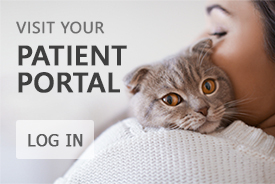Understanding Your Dogs Sleeping Pattern
Every dog owner wants to keep his or her pet happy and healthy. We buy the best foods and try to keep them as active as possible, but did you know sleep is just as important to a dog’s health as it is for our health? In order to keep our dogs in good health, we need to understand their sleep patterns, why they are different and what signs to look for in case you think something is wrong with your dog’s sleep.
How Human Sleeping Patterns Differ
Humans normally follow a binary sleep pattern. This means they sleep 8 hours at night and spend 12+ hours awake. Dogs, on the other hand, do not have a binary sleep pattern. Instead of being either awake or asleep, dogs have three distinct patterns: awake and active time (20% of their day), awake and not active time (30% of their day), and time for sleep (50% of their day). These differences exist because of the way humans and dogs spend their time in REM sleep. Humans spend 25% of their sleep in REM, whereas dogs spend only 10%. So, for dogs to feel as rested as humans, they need more sleep. And just like us, different dogs will sleep different amounts. Really active dogs will sleep less, whereas puppies and larger breeds will spend more time sleeping.
How to Help Your Dogs Sleeping Pattern
- Daily Exercise – Take your dog on daily walks. It also helps to take them new places, or on new routes every once in awhile. We could all use a little something new from time to time!
- New Toys – Buying new toys or just keeping different toys around the house can help keep your dog stimulated and active during the day.
- Play Games – Playing fetch or hiding toys around the house or the backyard helps your dog stay active and keeps their noses busy!
- Playdates – Take your dog to a dog park or somewhere you know they will be able to interact with other dogs. They will love getting to play with new dogs and explore new environments.
- Volunteer – If your dog works well with strangers, they could potentially work as a therapy dog. This is a great way to keep them active during the day!
What About Sleep Disorders: Can Dogs Have Them?
Now that you know dogs have sleeping patterns like humans, it’s also helpful to know they can have sleep disorders as well. They can suffer from insomnia, narcolepsy and even sleep apnea. Here are some signs that your dog may be dealing with a sleep disorder.
- Trouble Sleeping throughout the Day or Night – If you notice your dog struggling to sleep, they could be suffering from insomnia. Experts say this could be a sign of another health problem, so take your dog to his veterinarian promptly to uncover the source and help your dog begin to sleep better.
- Extreme Sleepiness – Your dog could be narcoleptic if you notice any extreme sleepiness during the day. Narcolepsy disrupts the deep sleep we get in REM sleep, so they will struggle with falling asleep too quickly and too often, and they could even experience sleep attacks – sudden muscle weakness and paralysis while awake. If you suspect your dog is dealing with narcolepsy, take him to the veterinarian immediately. This condition could affect his safety if he has access to water (stream, rivers or pools).
- Loud Snoring – Although this symptom may just mean your dog snores loudly, it could be an indication that your dog has sleep apnea. Sleep apnea can temporarily stop your dog’s breathing, so they will wake up and not be able to have uninterrupted REM sleep.
- Pawing at the Air, Running into Walls, Attacking Objects or Biting during Sleep – If your dog is active while sleeping, this could be a sign that your dog has REM Behavior disorder.
If you notice any of these symptoms in your dog, contact your veterinarian immediately. They can offer solutions to help your dog get better sleep.
In order to really help your dog sleep well, it’s important to understand that human and dog sleep patterns differ. With this understanding, you’ll be able to keep your dog well rested and notice any issues your dog may be having that could be an indication of a sleep disorder. We hope these tips will get your dog on the road to a more active lifestyle and better sleep!
Have you ever noticed any sleep issues in your dog? What did you do to help them sleep better? Share your experience in the comment section below.
The post Understanding Your Dogs Sleeping Pattern appeared first on Pet Assure Blog.
 Posted by dvmgalaxy
Posted by dvmgalaxy- Posted in Uncategorized
 Feb, 14, 2018
Feb, 14, 2018 Comments Off on Understanding Your Dogs Sleeping Pattern
Comments Off on Understanding Your Dogs Sleeping Pattern

 (770) 545-8077 | Fax: (770) 450-8573
(770) 545-8077 | Fax: (770) 450-8573




